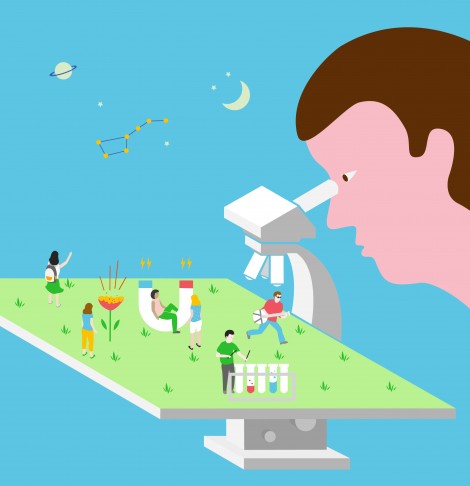There’s more to science on campus than lectures and lab reports. Science life at the University of Toronto includes research opportunities, activism, purple people, and a functioning cannon. All are part of the unique culture of the U of T’s science and Engineering programs.
Research and Discovery
U of T has a rich tradition of discovery and invention, and that tradition is maintained in part because of the contribution of undergraduate students. There are many opportunities for U of T students to get involved in high-level research. Science students can apply to work-study programs during the year, or work with research teams over the summer. These positions are paid, and offer valuable experience for those students who seek work in research fields.
Students can also choose to participate in a second-year Research Opportunity Program (ROP). ROPs are either full-year or summer-long courses which count toward degree and program requirements. Students participating in ROPs generally work with faculty on pre-existing research projects, though some ROPs allow students to create their own projects in a self-directed learning environment. Students interested in taking an ROP course should look for course codes which end in “299Y” and check out this website.
Clubs and Activism
Clubs and societies allow students to explore science in a less rigorous setting. A wide variety of activities and events are run by students through their respective colleges and faculties, as well as through the University of Toronto Students’ Union (UTSU) and ULife services.
Clubs that are activism- and action-focused work on varying scales. Engineers Without Borders is one of many clubs on campus that does work locally and internationally. The University of Toronto Biology Environmental Action Team (UTBEAT) works toward establishing sustainable practices within the university’s biology departments.
Clubs are open to students regardless of what they study, and most college-sponsored clubs are open to all students regardless of college affiliation.
We are the engineers!
The University of Toronto Engineering Society, or SkuleTM, is the oldest engineering society in Canada. Engineering classes typically do not overlap with Arts and Science courses, which can lead to a divide between engineering students and “artscis” (pronounced “artsys” — the word is engineer slang for Arts and Science students). Boisterous and tight-knit, engineers are a distinct and often divisive group on campus.
Particularly distinctive is the practice of purpling, which requires the subject to cover themselves head-to-toe in purple paint. Also hard to miss is the boom of the SkuleTM cannon, the official SkuleTM mascot. The cannon is often accompanied by the Lady Godiva Memorial Bnad [sic] (LGMB). All engineering students are members of the LGMB by default. Absolutely no musical talent is required to play with the LGMB, which contributes to its inimitable sound.
Though they may seem odd to outsiders, these traditions play an important role in engineering student culture. “When you start doing the crazy stuff, you’re all silly, but you’re all being silly together. So that gives everyone a sense of community, and that’s where the engineering community — this sense of belonging — comes from, ” says Tabish Gilani, a second-year mechanical engineering student and former Track One representative. “I would definitely recommend purpling as an experience.”
SkuleTM sponsors its own societies and events. Massimo Gordillo, a third-year industrial engineering student, says that though engineers may seem to outsiders to be “cliquey” or “intimidating,” non-engineering students should “absolutely” come out to these events: “Just because we’re in different faculties, doesn’t mean that we can’t be super cool [and] get along.” Gilani adds, “At the end of the day, we’re all from U of T.”


